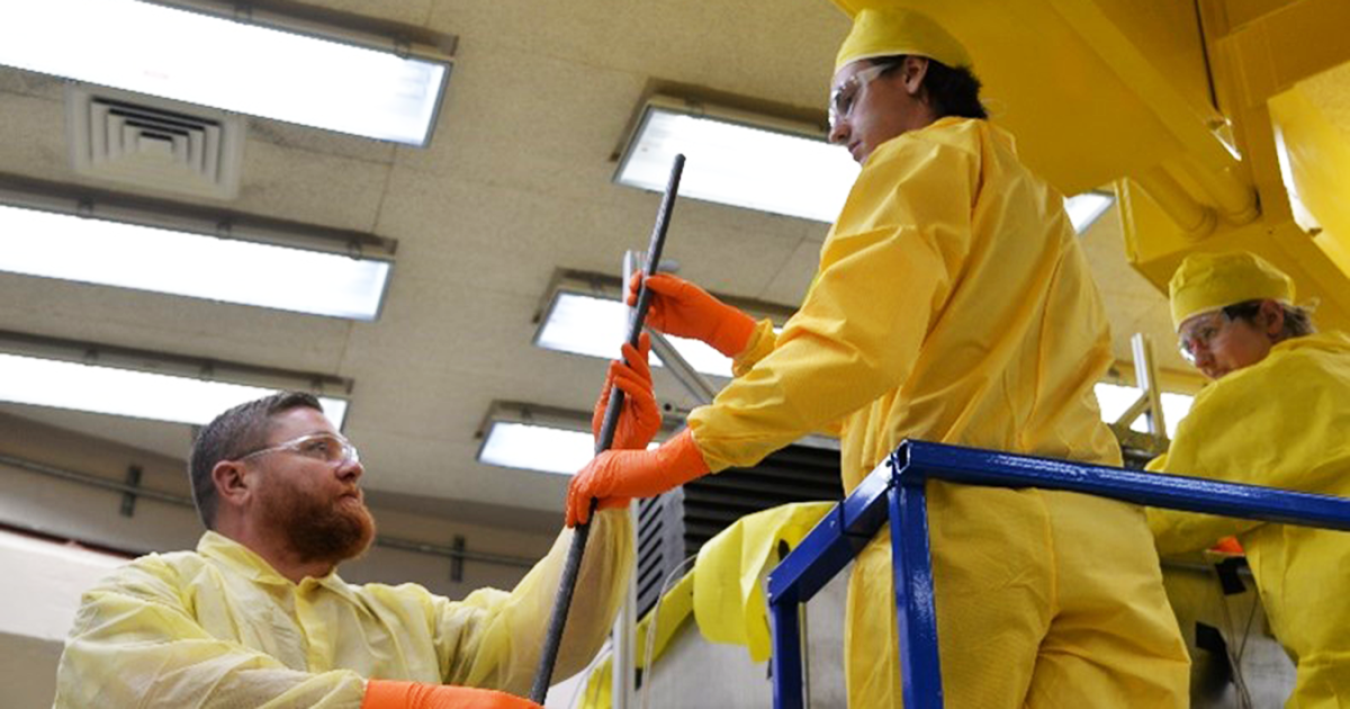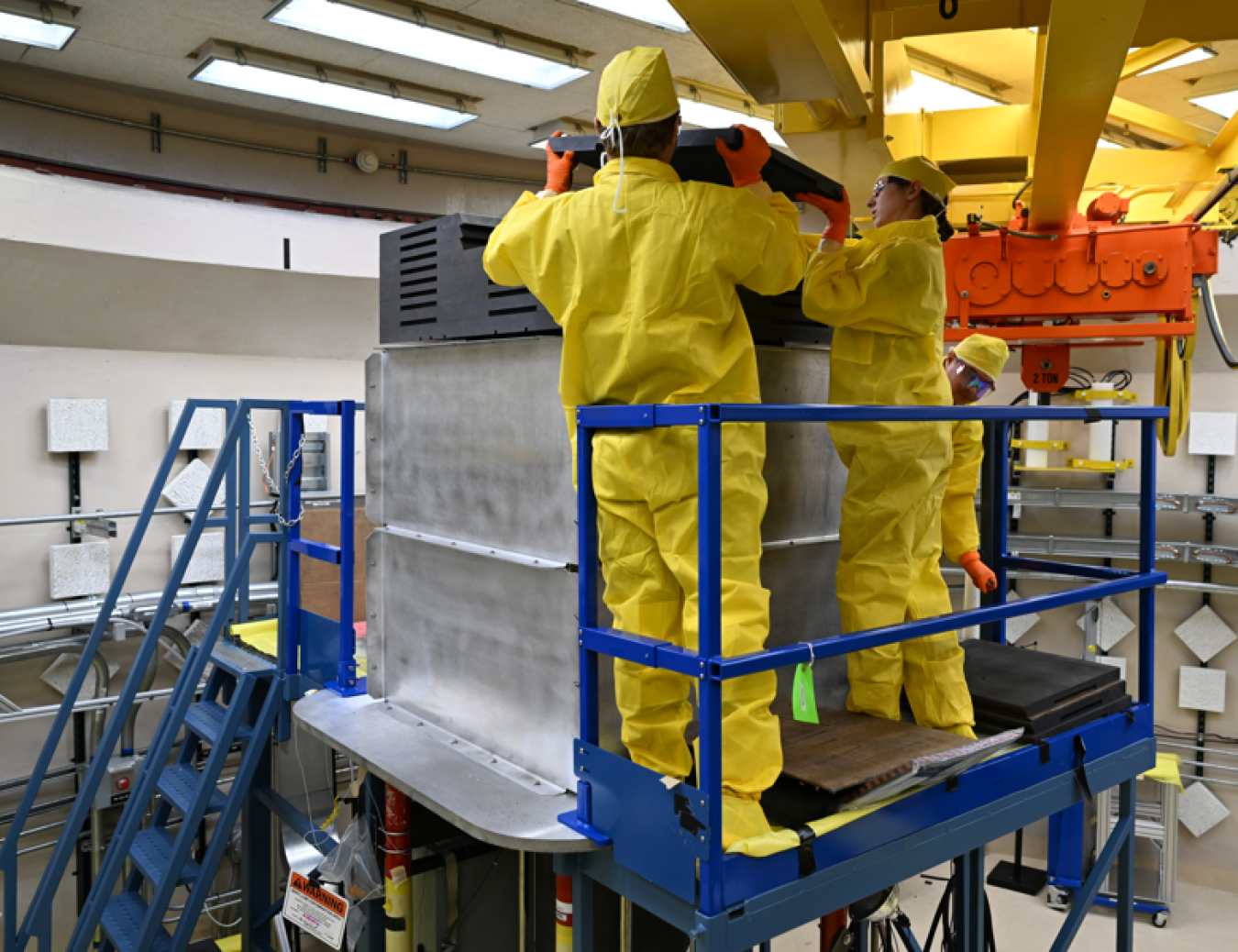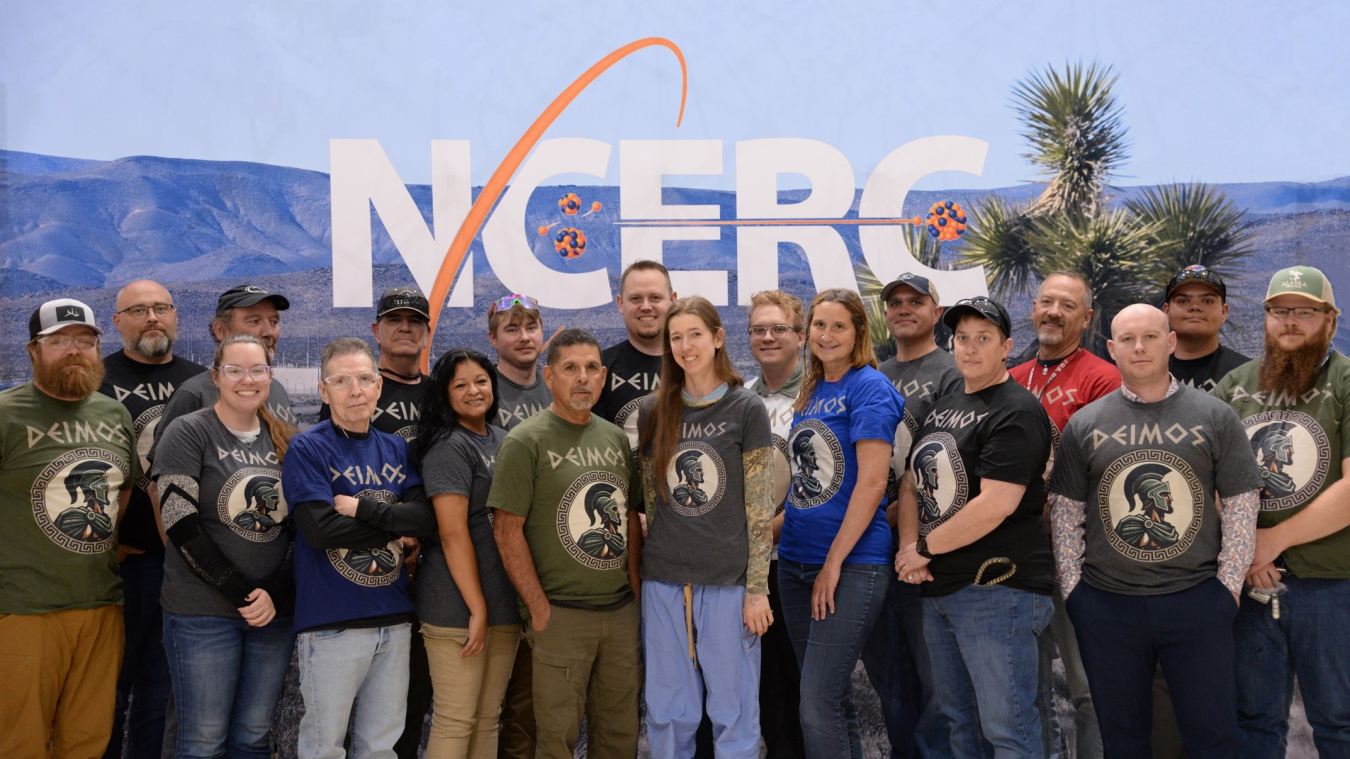For the first time in more than two decades, Los Alamos National Laboratory researchers performed the nation’s first critical experiment using a ceramic fuel required by some advanced reactor designs.
November 21, 2024

A graphite fuel "cup" containing fuel pellets ready for insertion into a Deimos graphite monolith.
For the first time in more than two decades, Los Alamos National Laboratory researchers performed the nation’s first critical experiment using a ceramic fuel required by some advanced reactor designs.
The experiment ties into a larger effort between the U.S. Department of Energy and Nuclear Regulatory Commission to provide new design and safety related data on the use, storage, and transportation of high-assay low-enriched uranium, also known as HALEU.

The Deimos experiment being assembled.
A Valuable Partnership
The Deimos criticality demonstration was funded by LANL’s Laboratory Directed Research and Development program and supports work currently underway through DOE’s HALEU Availability Program.
The Department recently awarded $17 million to 16 projects to help develop public data and criticality benchmarks related to the use, storage, and transportation of HALEU fuels.
The data from the projects will enable efficient future design and safety reviews and help the nuclear industry develop new and novel solutions in safety and design of their applications.
Criticality benchmarks are essential to nuclear design and safety evaluations required by the industry and regulatory bodies.
There are very few benchmarks that use HALEU – Deimos will help the nuclear industry fill this gap.
The DOE/NRC Criticality Safety for Commercial-Scale HALEU for Fuel Cycle and Transportation project is performed in collaboration with the National Nuclear Safety Administration’s Nuclear Criticality Safety Program and the Office of Science Nuclear Physics National Nuclear Data Program.


